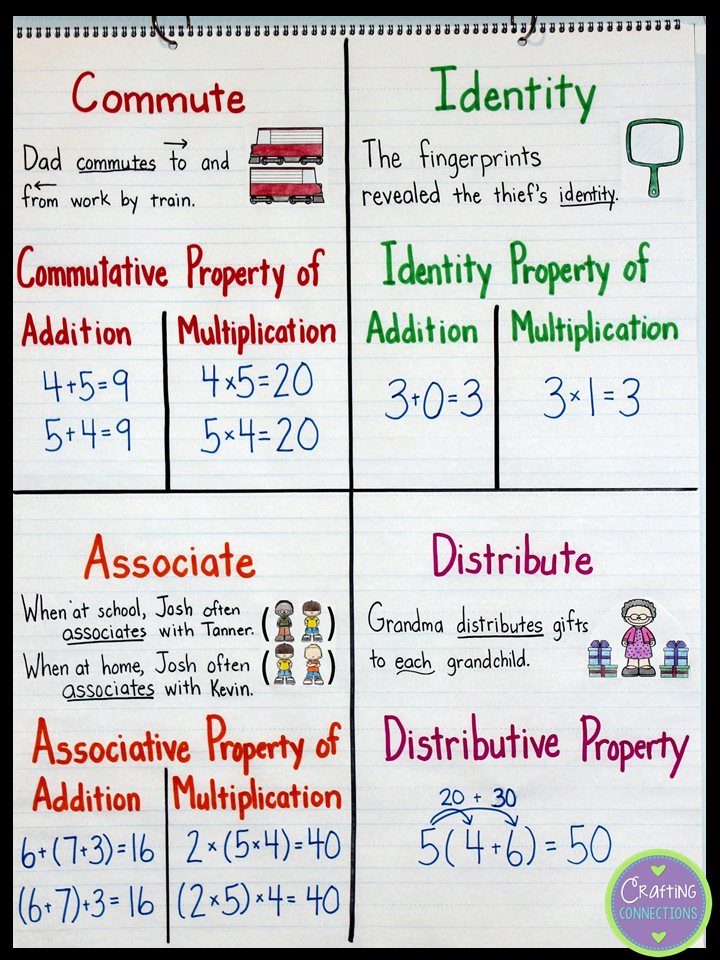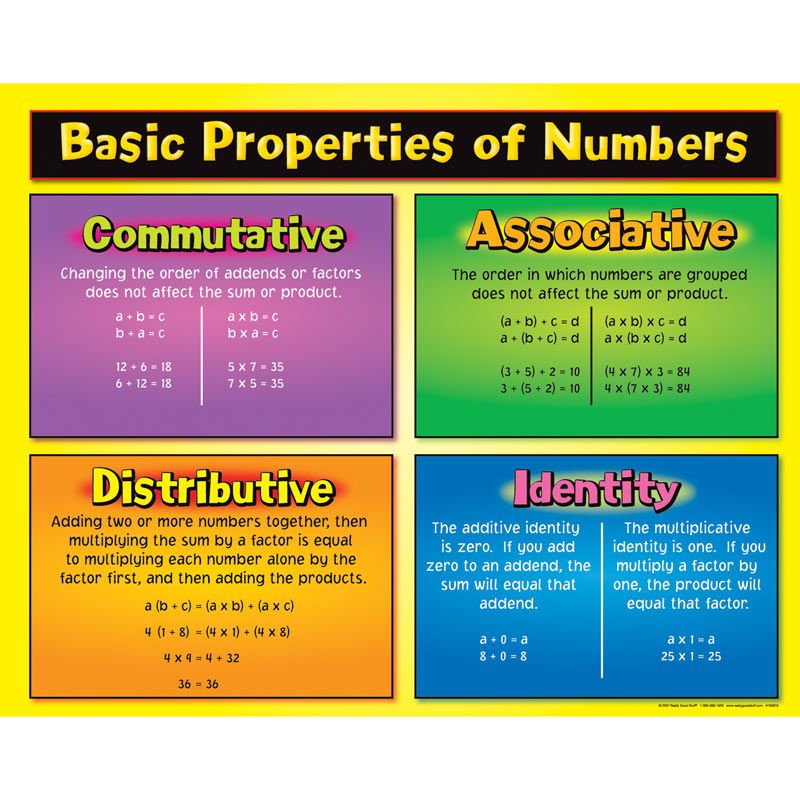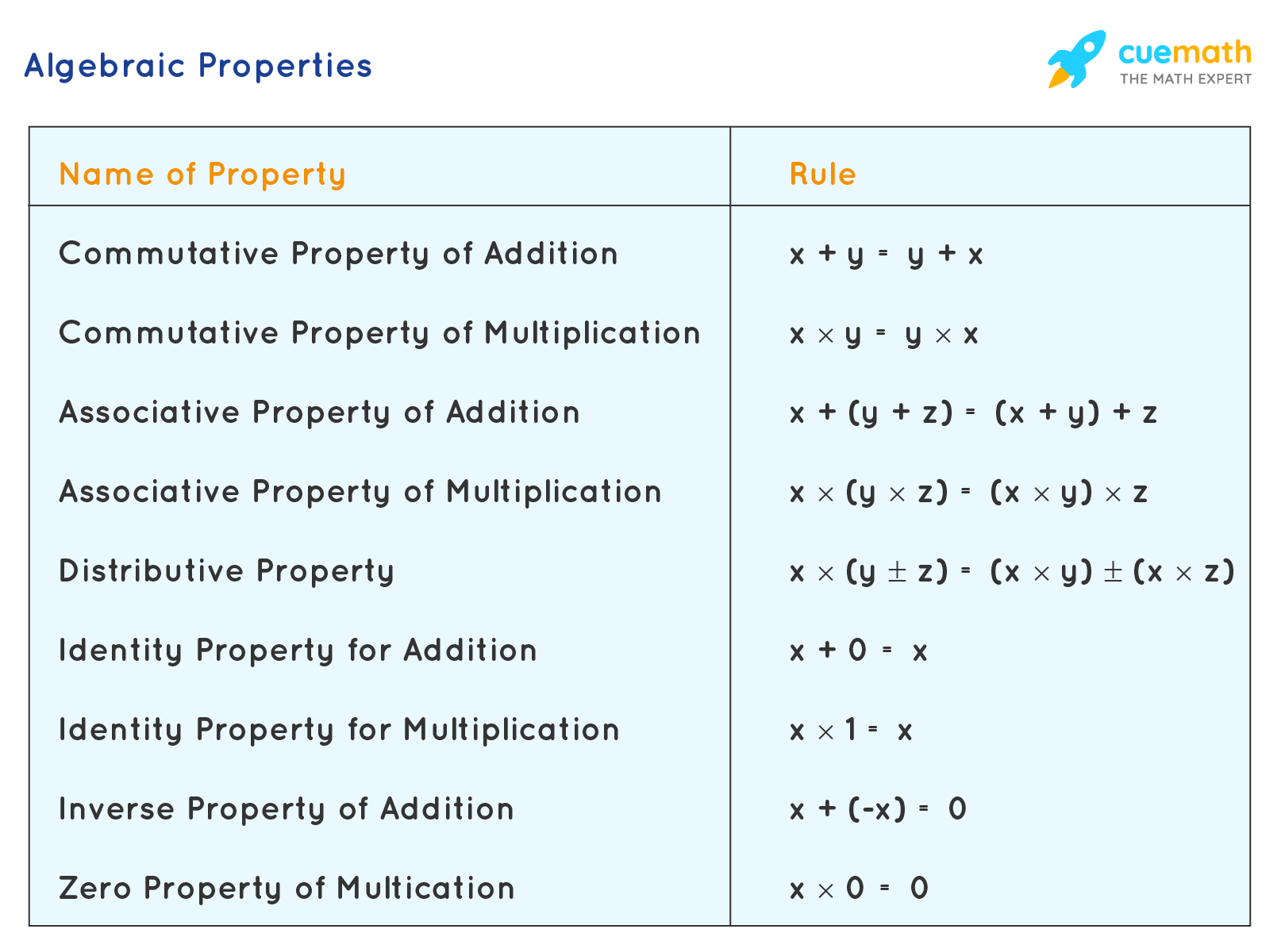What Are The Properties Of Math
What Are The Properties Of Math - Properties are the laws of math that state that a mathematician must follow these rules [the properties] to solve a math problem. Pictures and examples explaining the most frequently studied math properties including the associative, distributive, commutative, and. The associative, commutative, and distributive properties of algebra are the properties most often used to simplify.
Properties are the laws of math that state that a mathematician must follow these rules [the properties] to solve a math problem. Pictures and examples explaining the most frequently studied math properties including the associative, distributive, commutative, and. The associative, commutative, and distributive properties of algebra are the properties most often used to simplify.
The associative, commutative, and distributive properties of algebra are the properties most often used to simplify. Properties are the laws of math that state that a mathematician must follow these rules [the properties] to solve a math problem. Pictures and examples explaining the most frequently studied math properties including the associative, distributive, commutative, and.
Properties of Number System Math Poster Math poster
The associative, commutative, and distributive properties of algebra are the properties most often used to simplify. Properties are the laws of math that state that a mathematician must follow these rules [the properties] to solve a math problem. Pictures and examples explaining the most frequently studied math properties including the associative, distributive, commutative, and.
Buy Basic Properties of Numbers Educational Classroom Math Online at
The associative, commutative, and distributive properties of algebra are the properties most often used to simplify. Properties are the laws of math that state that a mathematician must follow these rules [the properties] to solve a math problem. Pictures and examples explaining the most frequently studied math properties including the associative, distributive, commutative, and.
Math Properties Diagram Quizlet
Properties are the laws of math that state that a mathematician must follow these rules [the properties] to solve a math problem. The associative, commutative, and distributive properties of algebra are the properties most often used to simplify. Pictures and examples explaining the most frequently studied math properties including the associative, distributive, commutative, and.
Cut Property Of Real Numbers PRORFETY
The associative, commutative, and distributive properties of algebra are the properties most often used to simplify. Pictures and examples explaining the most frequently studied math properties including the associative, distributive, commutative, and. Properties are the laws of math that state that a mathematician must follow these rules [the properties] to solve a math problem.
Math Properties Connecting with the Terms Crafting Connections
Pictures and examples explaining the most frequently studied math properties including the associative, distributive, commutative, and. Properties are the laws of math that state that a mathematician must follow these rules [the properties] to solve a math problem. The associative, commutative, and distributive properties of algebra are the properties most often used to simplify.
Pin by Kellie Adamucci on Math Teaching math strategies, Math methods
Properties are the laws of math that state that a mathematician must follow these rules [the properties] to solve a math problem. The associative, commutative, and distributive properties of algebra are the properties most often used to simplify. Pictures and examples explaining the most frequently studied math properties including the associative, distributive, commutative, and.
Number properties, Math properties, Teaching math
The associative, commutative, and distributive properties of algebra are the properties most often used to simplify. Properties are the laws of math that state that a mathematician must follow these rules [the properties] to solve a math problem. Pictures and examples explaining the most frequently studied math properties including the associative, distributive, commutative, and.
Properties of math 321 plays Quizizz
Properties are the laws of math that state that a mathematician must follow these rules [the properties] to solve a math problem. The associative, commutative, and distributive properties of algebra are the properties most often used to simplify. Pictures and examples explaining the most frequently studied math properties including the associative, distributive, commutative, and.
Properties Of Addition 3rd Grade Carol Jone's Addition Worksheets
The associative, commutative, and distributive properties of algebra are the properties most often used to simplify. Pictures and examples explaining the most frequently studied math properties including the associative, distributive, commutative, and. Properties are the laws of math that state that a mathematician must follow these rules [the properties] to solve a math problem.
List Of Basic Math Properties
Pictures and examples explaining the most frequently studied math properties including the associative, distributive, commutative, and. The associative, commutative, and distributive properties of algebra are the properties most often used to simplify. Properties are the laws of math that state that a mathematician must follow these rules [the properties] to solve a math problem.
The Associative, Commutative, And Distributive Properties Of Algebra Are The Properties Most Often Used To Simplify.
Properties are the laws of math that state that a mathematician must follow these rules [the properties] to solve a math problem. Pictures and examples explaining the most frequently studied math properties including the associative, distributive, commutative, and.









